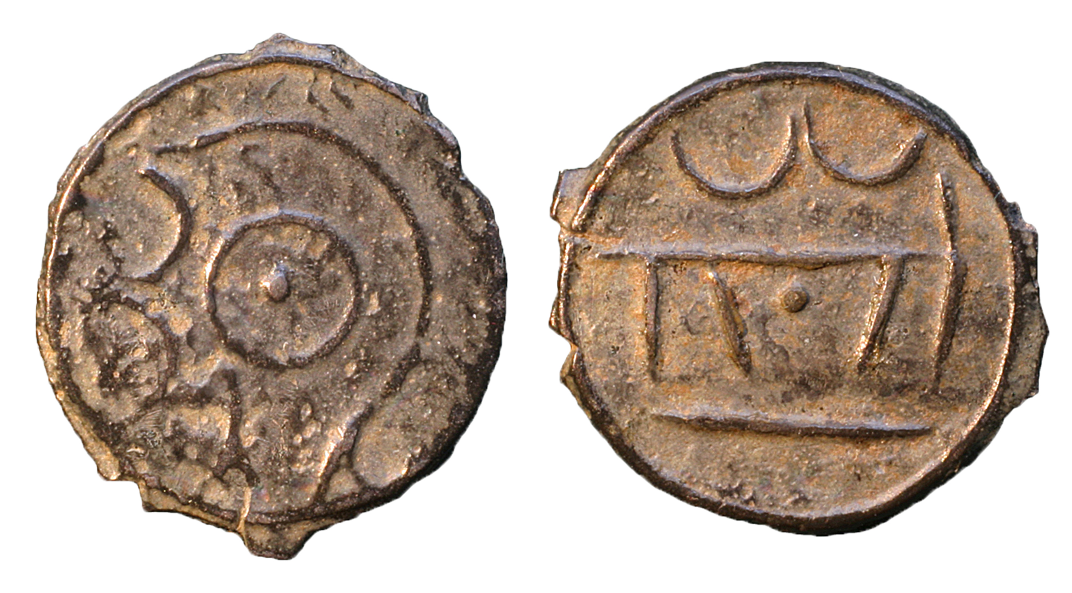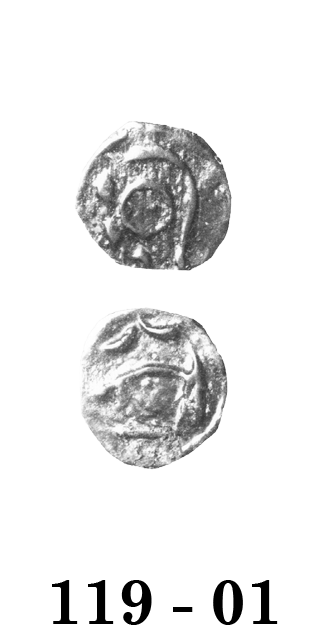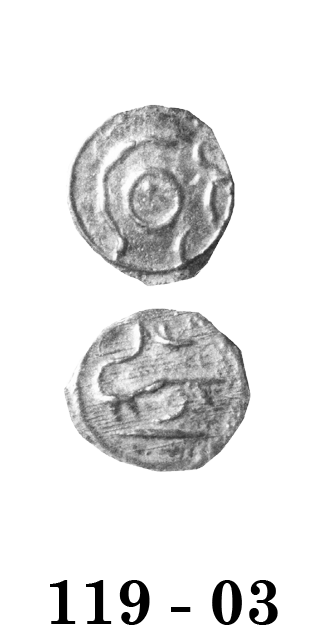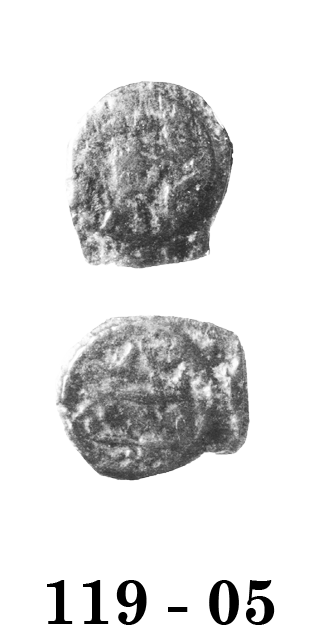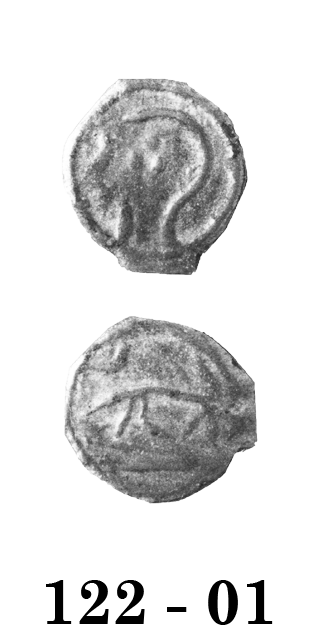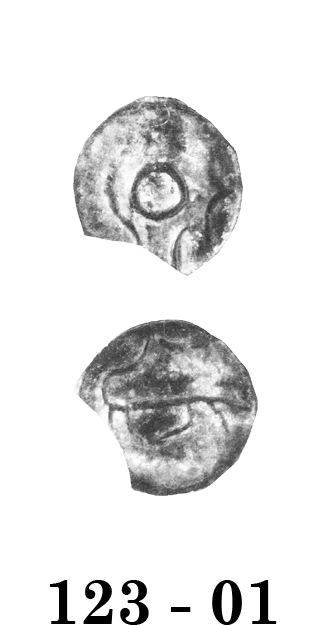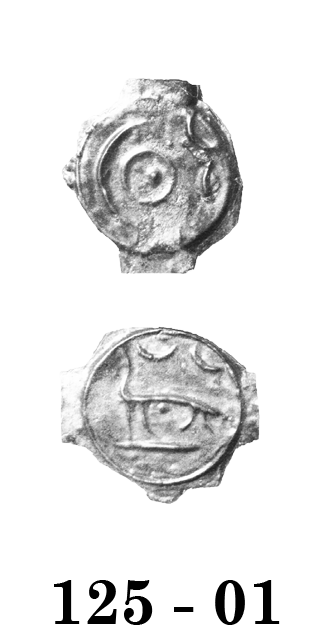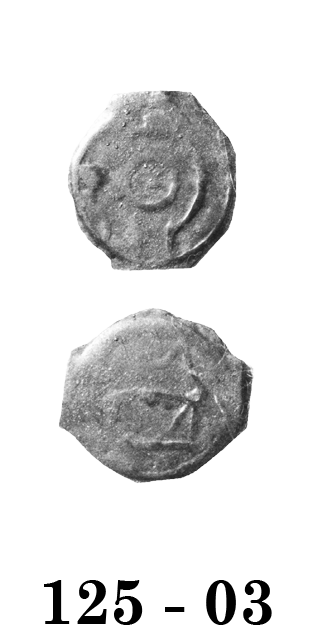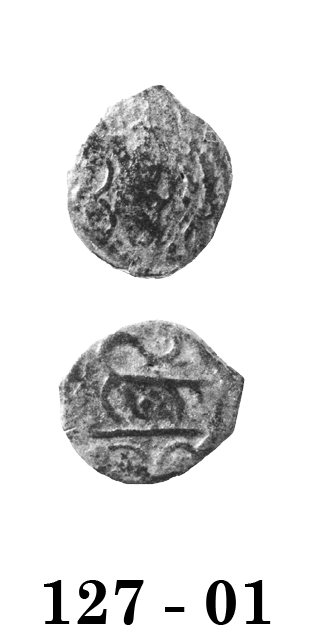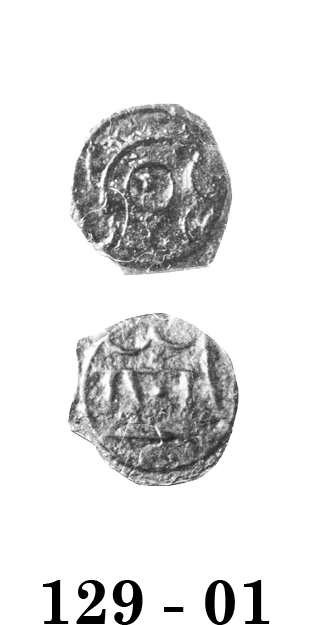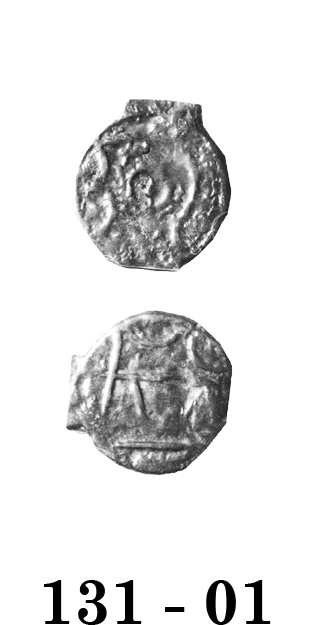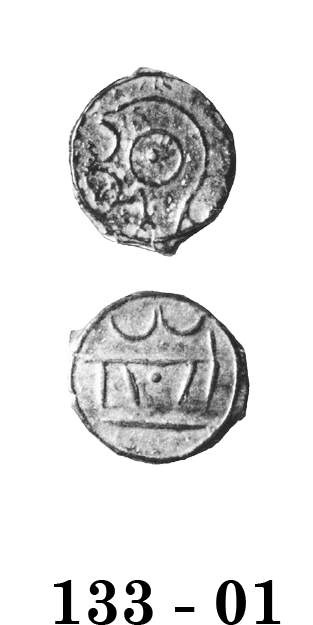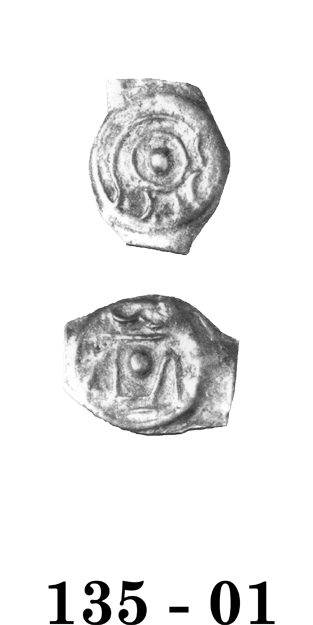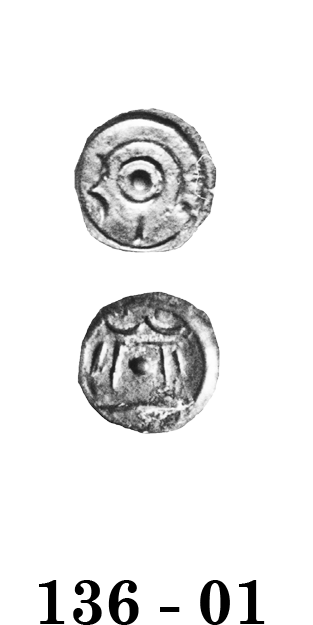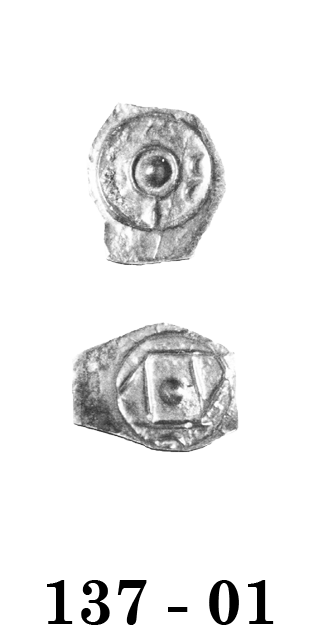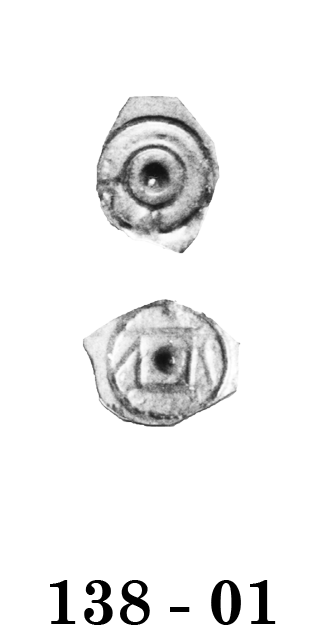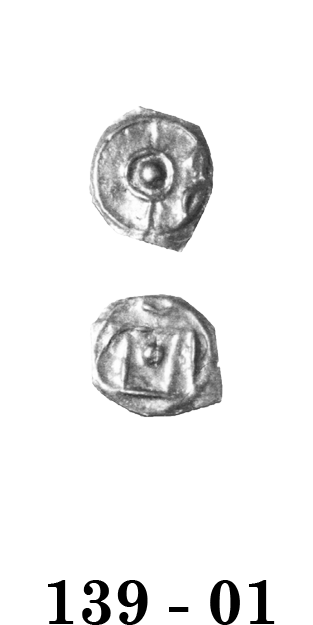
Celtic Coinage of Britain
third edition
Click on coin to see hidden information
The Cast Bronzes of Kent
The Cast Bronzes were produced for sixty-five years, and most of the time the aesthetic qualities were carefully controlled. In general, cast coins tend to become thick and dumpy in appearance and this posed a problem. The Kentish tribes wanted their coins to be more anesthetically pleasing. Casting large, thin coins posed many technical problems and so the success the moneyers achieved is a tribute to their metal-working expertise. All the coins were cast in chains using clay moulds with a runner system connecting the cavities. The methods used to manufacture' the moulds changed over time as the workers perfected their techniques.
For most of the series, the images were scribed freehand into the clay moulds. Traditionally, these images have been used to establish a type sequence widely used in archaeological work. Today however, the coins are seen to be mass-produced items. The stylus work was done as quickly as possible and thus the images provide little basis for establishing the sequence.
A better indicator of types are the marks produced by the different mould manufacturing processes. These yield a plausible chronological sequence, consequently, the following catalogue is primarily concerned with the mould manufacturing techniques. The images are taken into account only when major differences in artistic style are noted. For example, at some point the images on the reverse switch from curvilinear forms to boxy ones. The change may indicate the appearance of a new moneyer or a modification to the coining techniques.
The first three periods of manufacture occurred quickly and in rapid succession, as the moneyers sought the best production methods. After the techniques were perfected, an enormous number of coins were produced over a long period. Quantities of hundreds of thousands (perhaps millions) are thought to have been cast and several thousand examples exist today.
Innovative Period ca. 100 B.C to 90 B.C
The moneyers worked to eliminate the problems during the Innovative Period. Various techniques of producing the cavity-and-runner system were tried and experiments to create smooth mating-surfaces were carried out—all producing striations in the coins' fields. Four types of striations have been identified: CROSSED, MEDIUM, HEAVY and THIN, each revealing a different technique of mould production.
The Crossed Striations were produced by textile pressed into the clay to form the cavity and runner system. Medium Striations were the result of cutting a block of clay in two with a wire in an attempt to produce perfectly-mating moulds. Heavy Striations were produced by pressing the clay against a wooden surface to smooth it. None of these techniques was particularly successful— either excessive flash resulted or the striations were so severe the stylus image was ruined.
The Thin Striation coins are the commonest, because the technique was more successful and was employed for a longer time. These were produced by smoothing the clay with a flat scraper.
OPTIMIZATION PERIOD – 90 TO 50 B.C.
The transition to the Optimization Period is marked by an extremely rare type with three pellets in the Apollo head. A Thin Striation predecessor with the same pellets may exist. The first coins continue with a bull made up of curved lines, however at some point a change was made. The bull was given a boxy appearance by using straight lines in place of the curved ones.
A suspected transitional issue is known, with a bull having both straight and curved lines. This unusual issue is denoted by a pair of crescents under the exergual line. It is an extremely rare type and the only one displaying crescents. The date of manufacture is difficult to determine—it probably occurred early in the Optimization Period.
Alternatively, a time of overlap in which both curvilinear and boxy bull images were produced is also possible. Recently, the Stansted Airport Hoard appears to have yielded a striated coin with the boxy image, but this has not been confirmed. The relative chronology of the Innovative and Optimization Periods, at the moment quite problematic, may become clearer as more coins are discovered.
The vast majority of the coins in existence today were produced during the Optimization Period using a new mould-making method. The procedure was extremely successful and yielded exquisitely thin and flat coins—probably the most expertly-produced cast coins known. The clay moulds were pressed against a very smooth material, probably sheet bronze. This yielded moulds that had no striations to ruin the image, yet mated well enough to produce minimal flash. The only remaining problems were either one, the coins were so thin they cracked upon separation from the chain, or two, the moulds were so thin they failed to fill during casting.
ADJUSTMENT PERIOD – 50 TO 35 B.C.
These last two problems, incomplete casting and unsuccessful separation, were solved by a change in policy just before the introduction of the Struck Bronze series. The final cast coins were made small and thick—although they were dumpy and unappealing, they could be produced with no separation or mould filling problems.
Generally, the various types of cast bronzes are extremely rare. However, the optimization period issues were made in vast quantities over a long time and are today very common.
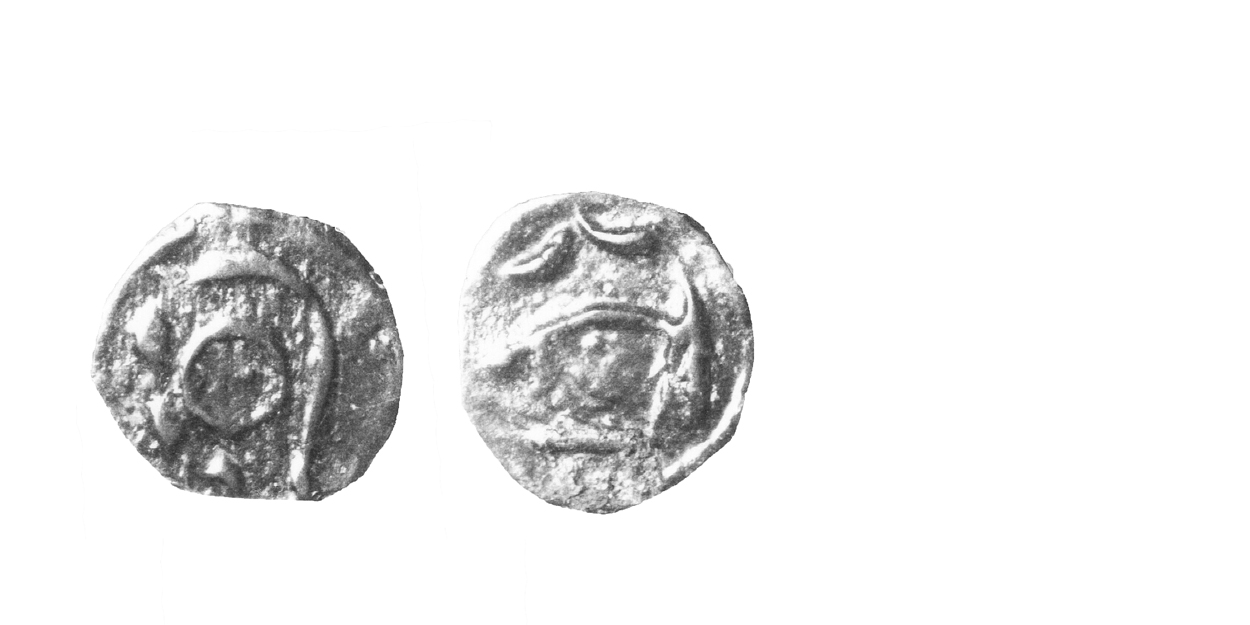
119 - 01 Thin Striations Type
100-90 B.C. Very Rare
Cast Bronze ca. 1.5 gms. 18 mm
Earliest Record: Van Arsdell, 1986b
OBV: Celticized head of Apollo left
Identifying points:
1) outline head of Apollo
REV: Celticized bull charging left
Identifying points:
1) bull made up of curved lines
CLASSIFICATION: Cantian C
NOTES:
- Thin, parallel striations in the field, on one side of the coin.
- No blobs interrupt the striations.
- The moulds were produced by scraping blocks of clay flat with a knife or other similar object.
- The illustrated coin has only one sprue because it was the last coin on the runner system.
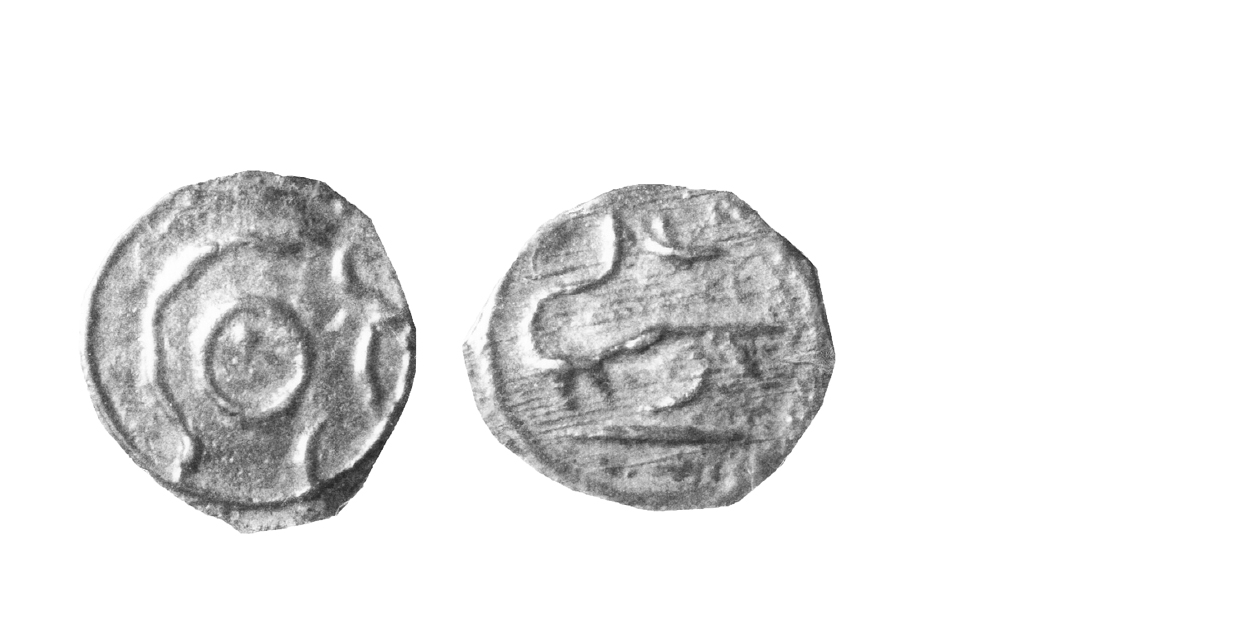
119 - 03 Thin Striations Type
100-90 B.C. Very Rare
Cast Bronze ca. 1.0 gm 18 mm
Earliest Record: Allen, 1971
OBV: Celticized head of Apollo right
Identifying points:
1) as 119-1 but head faces right
REV: Celticized bull charging right
Identifying points:
1) bull made up of curved lines
2) bull is of a slightly different form than 119 - 01
CLASSIFICATION: Cantian C
NOTES:
- Same manufacturing method as 119 - 01.
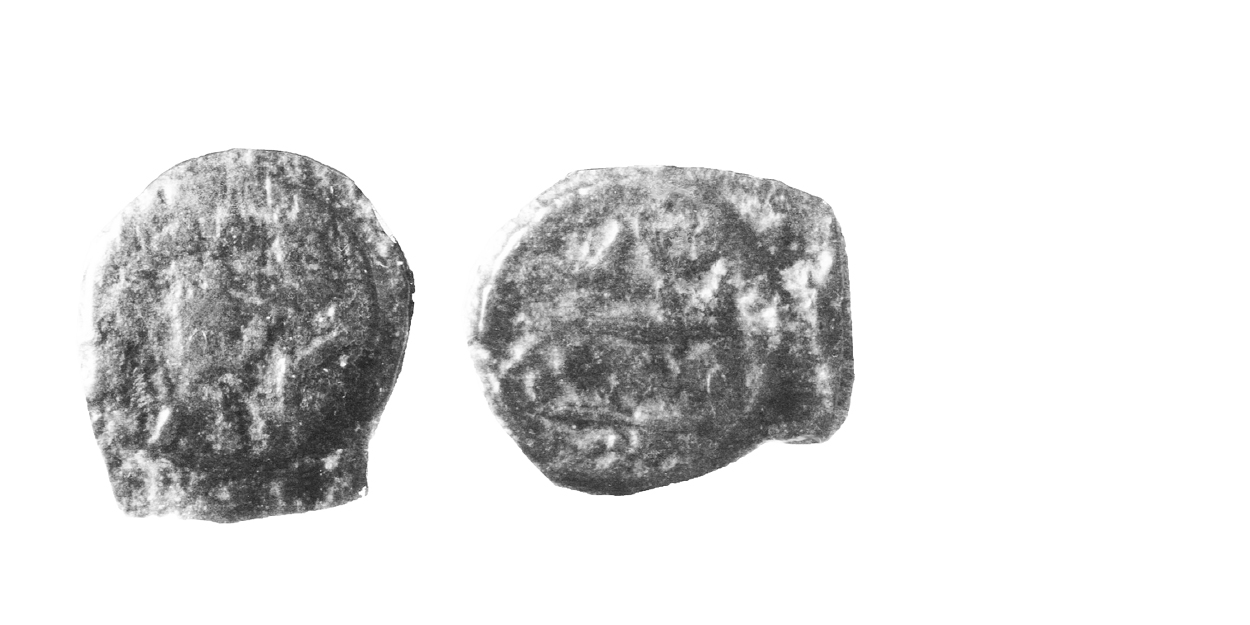
119 - 05 Thin Striation Type
100-90 B.C. Extremely Rare
Cast Bronze ca. 1.5 gms. 18 mm
Earliest Mention: Allen, 1971
OBV: Celticized head of Apollo right
Identifying points:
1) outline head of Apollo
2) pellet in eye
3) line runs vertically through neck
REV: Celticized bull charging left
Identifying points:
1) bull made up of straight lines
CLASSIFICATION: Cantian C
NOTES:
- Same manufacturing method as 119 - 01
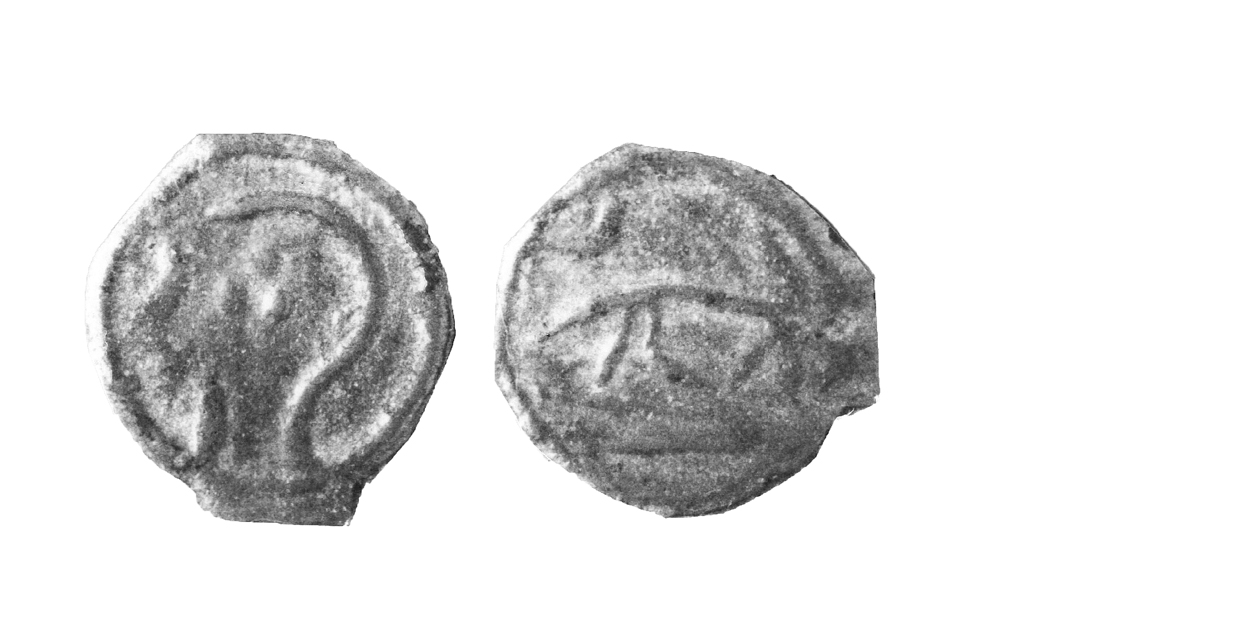
122 - 01 Three Dots Type
ca. 90 B.C. Extremely Rare
Cast Bronze ca. 1.6 gms. 19 mm
Earliest Record: Mack, 1964
OBV: Celticized head of Apollo left
Identifying points:
1) outline head of Apollo
2) three dots inside head
REV: Celticized bull charging left
Identifying points:
1) bull made up of curved lines
CLASSIFICATION: Cantian D
NOTES:
- Transitional type
- Thin striation variety possibly exists, but not confirmed
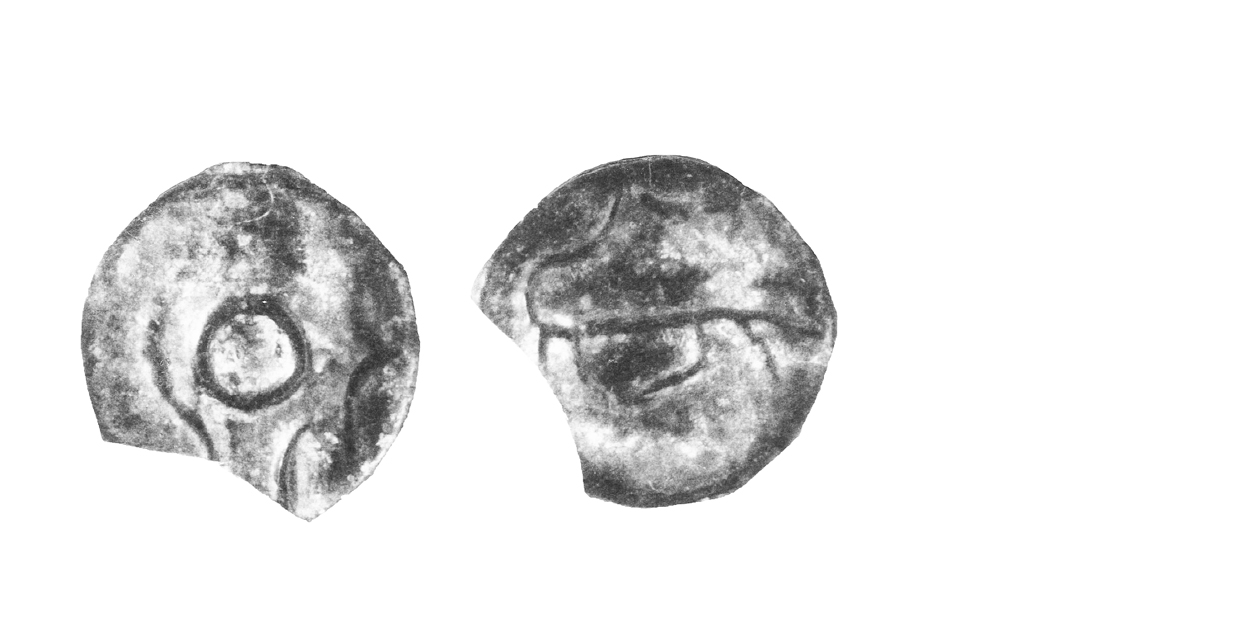
123 - 01 Rounded Bull Type
90-75 B.C. Extremely Rare
Cast Bronze 19 mm
Earliest Record: Allen, 1971
OBV: Celticized head of Apollo right
Identifying points:
1) outline head of Apollo
2) no pellet in eye circle
REV: Celticized bull charging right
Identifying points:
1) bull made up of curved lines
CLASSIFICATION: Cantian D
NOTES:
- Smooth fields with no striations
- Celtic Coin Index records indicate much rarer than originally thought
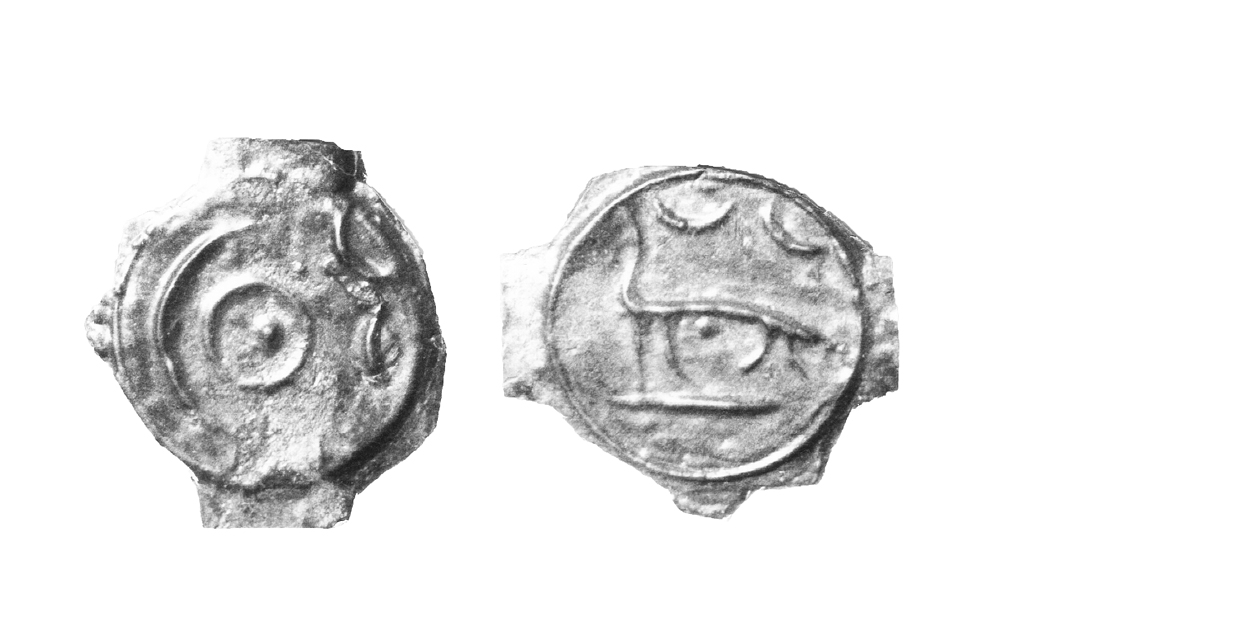
125 - 01 Rounded Bull Type
90-75 B.C Scarce
Cast Bronze ca. 1.6 gms. 17 mm
Earliest Record: Allen, 1971
OBV: Celticized head of Apollo right
Identifying points:
1) as 122-1
2) pellet in eye circle
REV: Celticized bull charging right
Identifying points:
1) as 122-1
CLASSIFICATION: Cantian D
NOTES:
- As 122-1
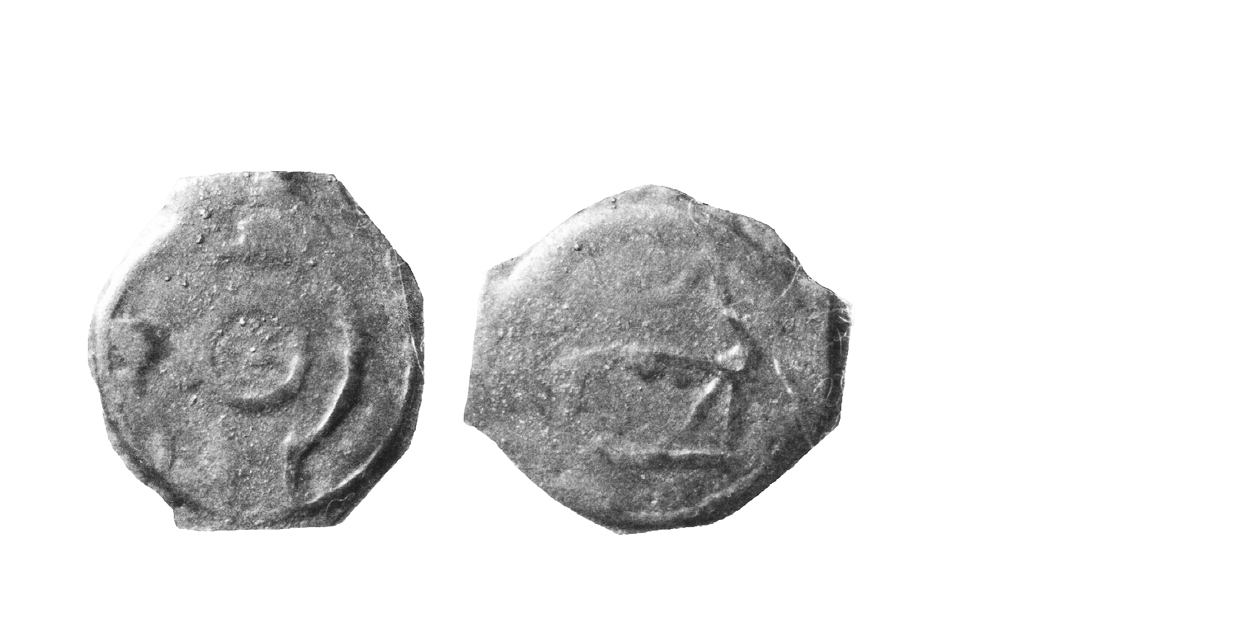
125 - 03 Rounded Bull Type
90-75 B.C. Very Rare
Cast Bronze ca. 1.6 gms. 17 mm
Earliest Record: Allen, 1971
OBV: Celticized head of Apollo left
Identifying points:
1) as 125-1
2) pellet in eye circle
REV: Celticized bull charging left
Identifying points:
1) as 125-1
CLASSIFICATION: Cantian D
NOTES:
- As 125-1 but images reversed
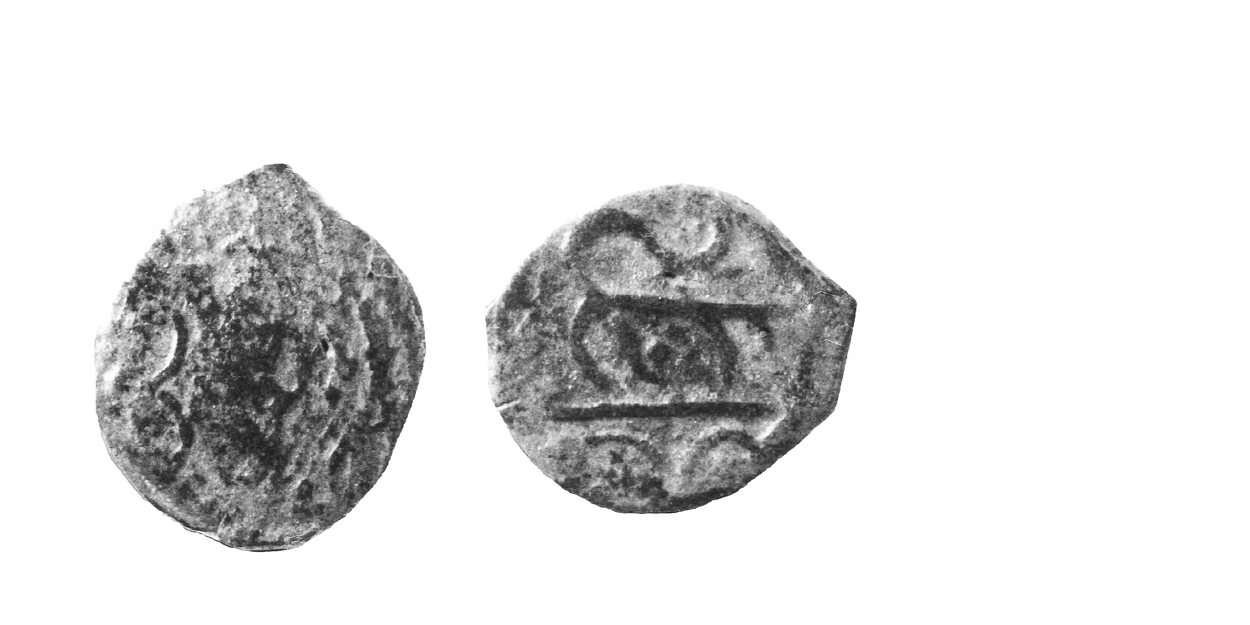
127 - 01 Crescent Type
ca. 85 B.C Extremely Rare
Cast Bronze ca. 1.2 gms. 17 mm
Earliest Record: Van Arsdell, 1986
OBV: Celticized head of Apollo left
Identifying points:
1) outline head of Apollo
REV: Celticized bull charging right
Identifying points:
1) bull made up of some straight lines
2) bull s tail curved
3) two crescents below exergual line
CLASSIFICATION: Cantian D
NOTES:
- Transitional type
- Illustrated coin appears to have been been gold plated in Iron Age times possibly for fraudulent use as a quarter stater
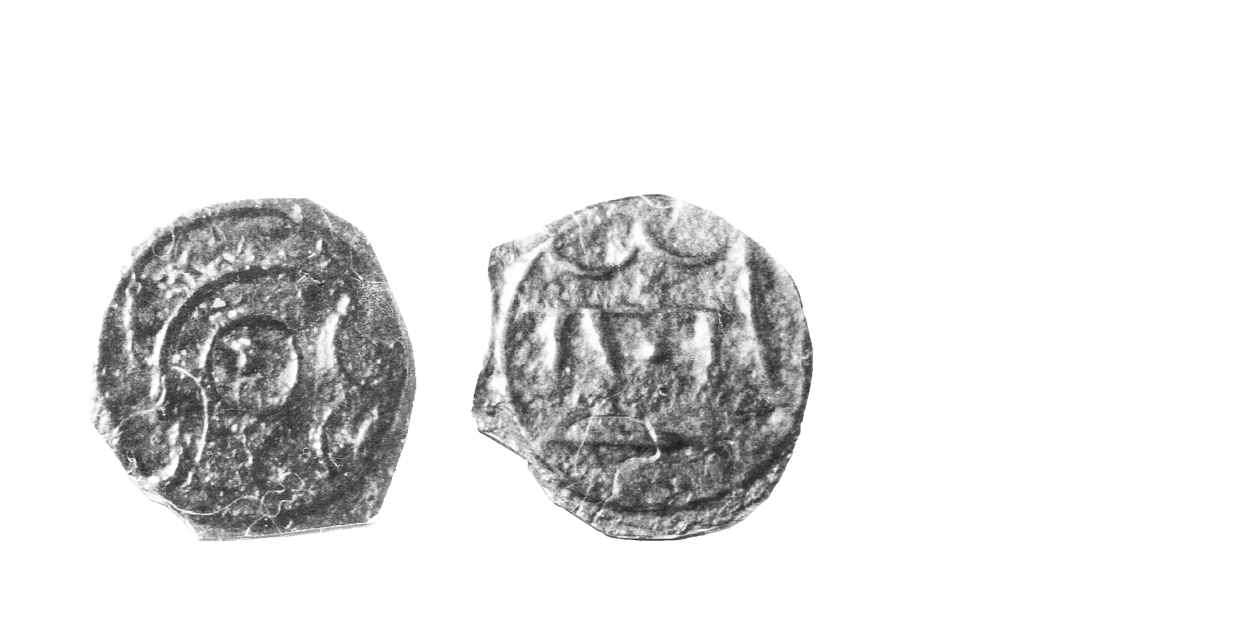
129 - 01 Angular Bull Type
85-50 B.C. Common
Cast Bronze ca. 1.6 gms. 17 mm
Earliest Record: Allen, 1971
OBV: Celticized head of Apollo right
Identifying points:
1) outline head of Apollo
2) pellet in centre
REV: Celticized bull charging left
Identifying points:
1) bull made up of straight lines
2) pellet in centre
CLASSlFlCATION: Cantian D
NOTES:
- The illustrated coin has only one sprue because it was the last coin on the runner system
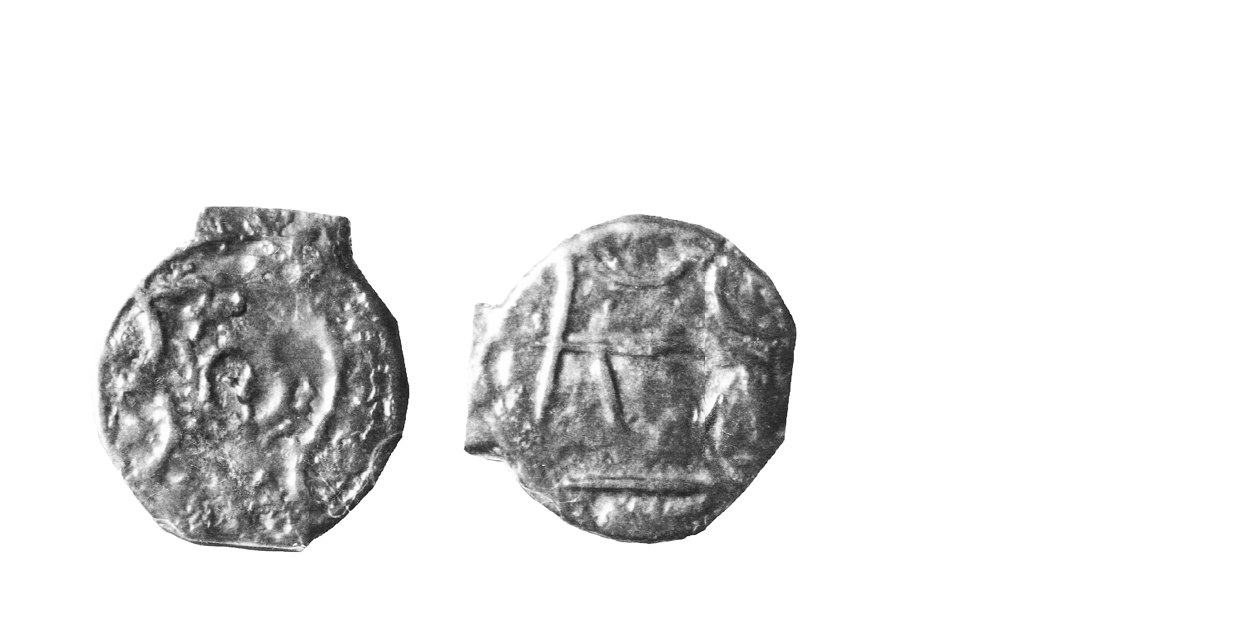
131 - 01 Angular Bull Type
85-50 B.C Rare
Cast bronze 18 mm
Earliest Record: Allen 1971
OBV: Celticized head of Apollo left
Identifying points:
1) as 129-1 but head faces left
REV: Celticized bull charging right
Identifying points:
1) as 129-1 but bull faces right
CLASSIFICATION: Cantian D
Notes:
- Celtic Coin Index records indicate rarer than originally thought
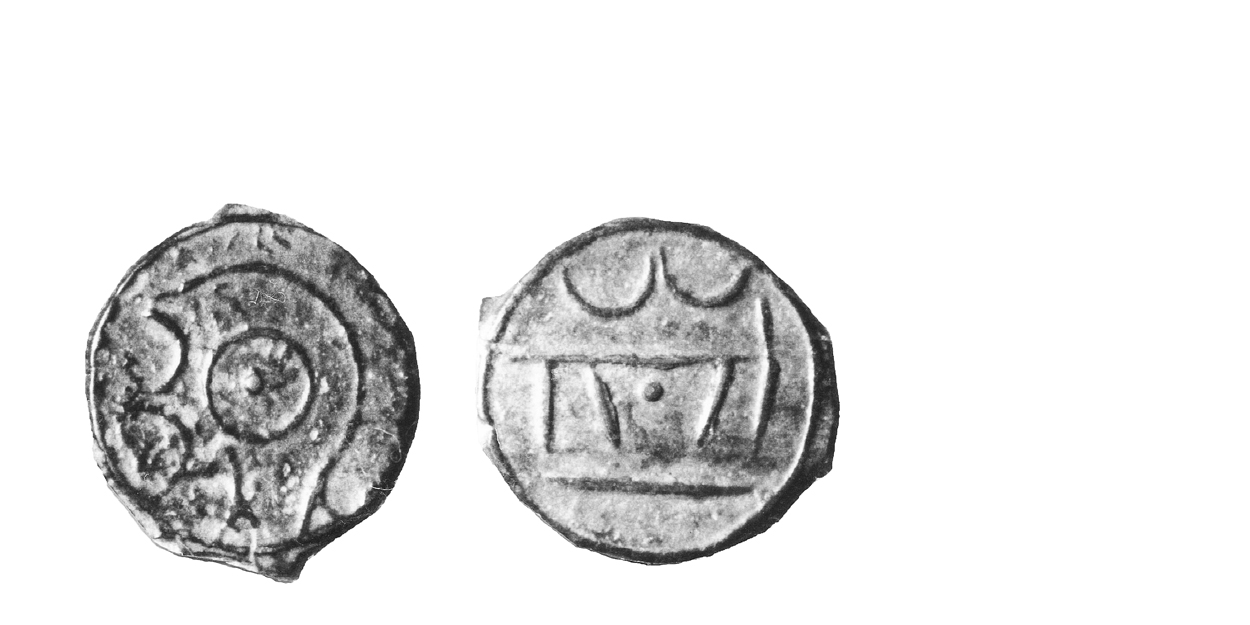
133 - 01 Angular Bull Type
85-50 B.C. Very Rare
Cast Bronze ca. 1.5 gms. 17 mm
Earliest Record: Allen, 1971
OBV: Celticized head of Apollo left
Identifying points:
1) as 129-1 but head faces left
2) central pellet
REV: Celticized bull charging left
Identifying points:
1) as 129-1
2) central pellet
CLASSIFICATION: Cantian D
Notes:
- Celtic Coin Index records indicate rarer that initially thought
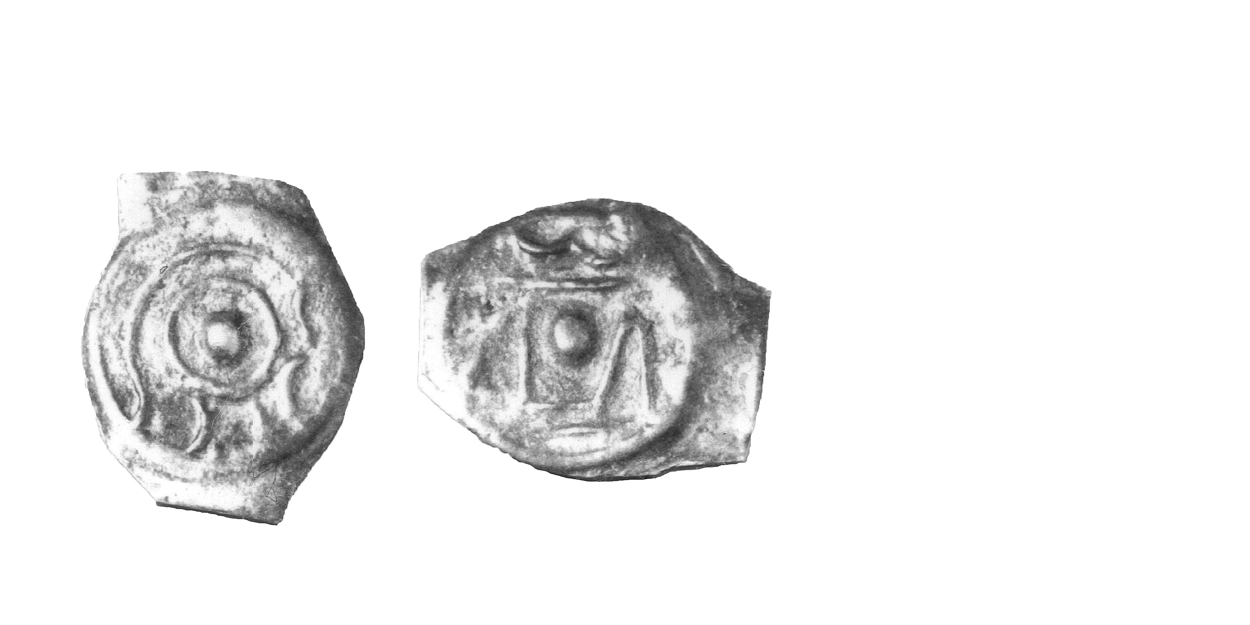
135 - 01 Early Dump Type
50-45 B.C. Rare
Cast Bronze ca. 1.5 gms. 14 mm
Earliest Record: Allen, 1971
OBV: Celticized head of Apollo right
Identifying points:
1) outline head of Apollo
2) pronounced pellet in centre of head
REV: Celticized bull
Identifying points:
1) bull made up of straight lines
2) pronounced pellet in centre of bull
3) often not possible to determine which way bull faces
CLASSIFICATION: Cantian E
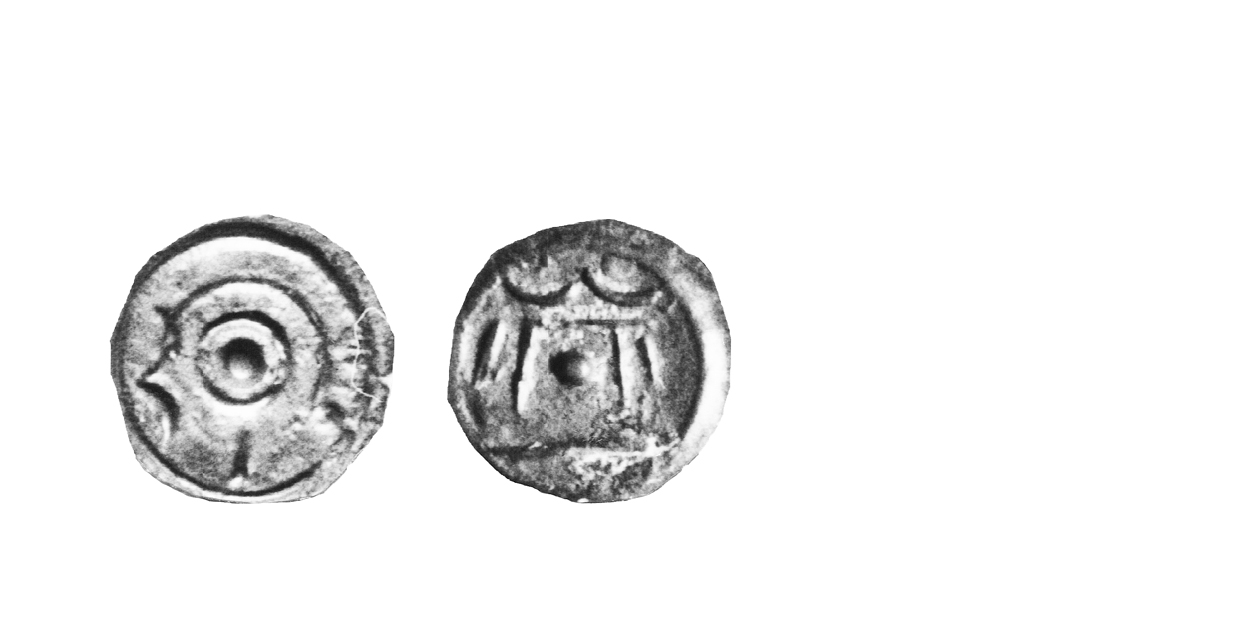
136 - 01 Early Dump Type
50-45 B.C. Scarce
Cast Bronze 13 mm
Earliest Record: Mack, 1953
OBV: Celticized head of Apollo left
Identifying points:
1) as 135 - 01 but head faces left
REV: Celticized bull
Identifying points:
1) as 135 - 01
CLASSIFICATION: Cantian E
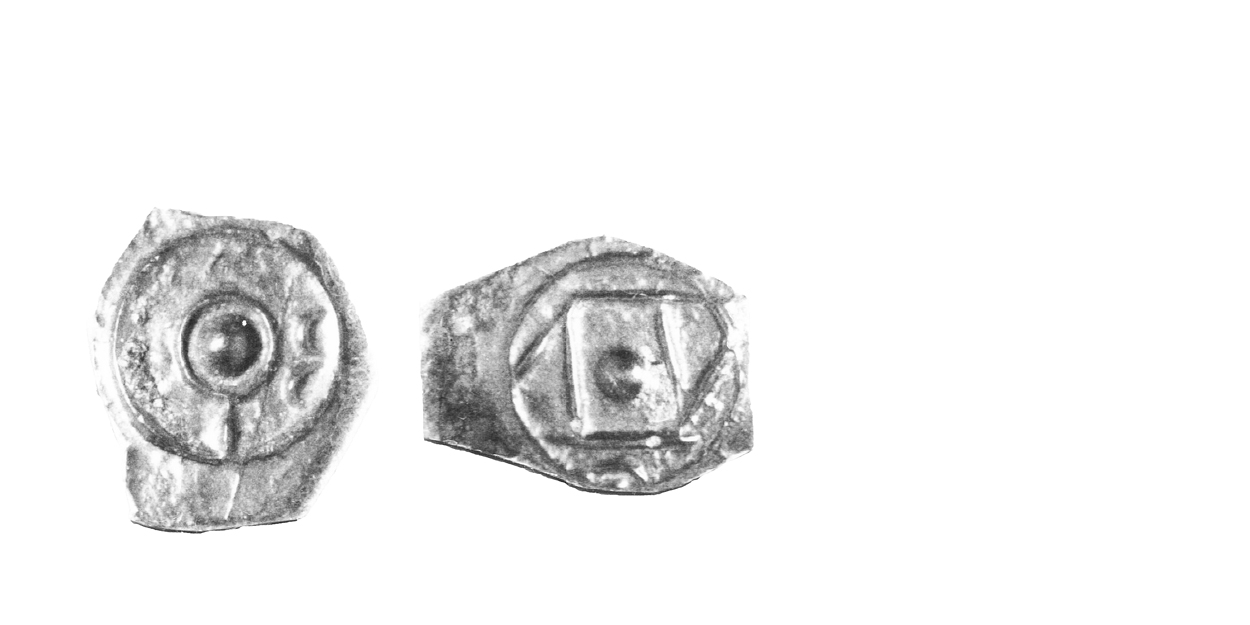
137 - 01 Middle Dump Type
45-40 B.C. Scarce
Cast Bronze ca. 1.2 gms. 13 mm
Earliest Record: Mack, 1953
OBV: Crude head of Apollo right
Identifying points:
1) barely recognizable outline head
2) pronounced pellet in centre
REV: Crude bull
Identifying points:
1) barely recognizable bull made up of straight lines
2) pronounced pellet in centre of coin
CLASSIFICATION: Cantian E
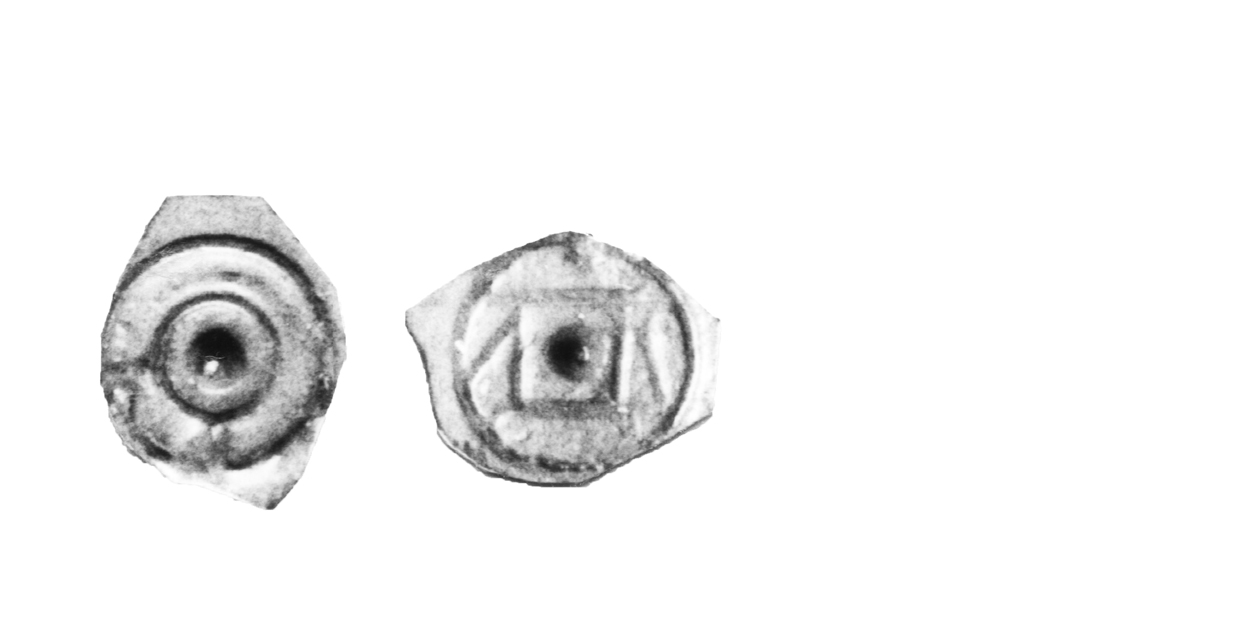
138 - 01 Middle Dump Type
45-40 B.C. Rare
Cast Bronze 13 mm
Earliest Record: Mack, 1953
OBV: Crude head of Apollo left
Identifying points:
1) as 137-1 but head faces left
REV: Crude bull
Identifying points:
1) as 137-1
CLASSIFICATION: Cantian E
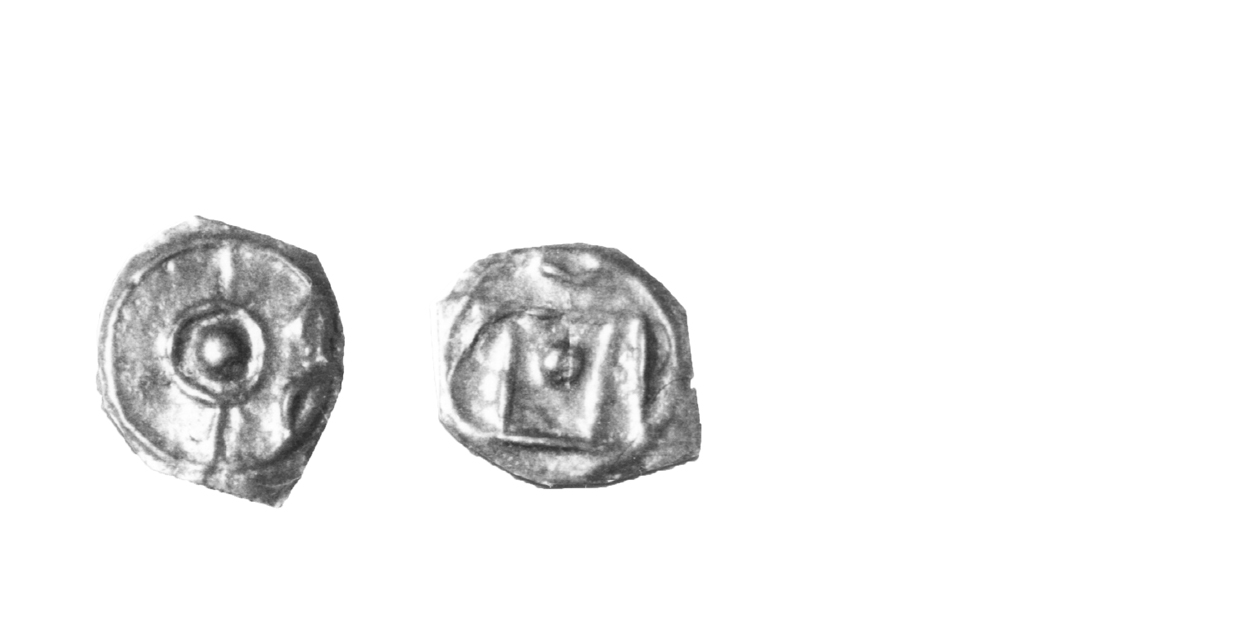
139 - 01 Late Dump Type
45-40 B.C. Common
Cast Bronze ca. 1.3 gms. 13 mm
Earliest Record: Evans, 1864
OBV: Crude head of Apollo right
Identifying points:
1) head of Apollo now only a circle with a line for the nose
2) pronounced pellet in centre
REV: Crude bull
Identifying points:
1) as 137-1
CLASSIFICATION: Cantian E
NOTES:
- Unconfirmed 'head left' variety, found at Rochester, may exist
The Cantii and Other Kentish Tribes
Caesar named four Celtic rulers in Kent, implying several tribcs inhabited the area. The Kentish tribes, he declared, were amongst the most advanced in all Britain. His testimony is supported by the coin evidence the Kentish coinages are amongst the most sophisticated of all those in Britain.
Beginning about 125 B.C., the tribes along the Kentish coast received the first imports of continental coins. Within fifty years, a money economy existed to the extent that small-value coins were needed to facilitate trade. The first coins produced in Britain, starting about 100 B.C., were the Kentish CAST BRONZES. These reveal a remarkable knowledge of casting techniques and show how the Celts applied their innovative spirit to practical manufacturing problems.
Imports of gold staters and quarters allowed the Kentish tribes to forestall striking their own gold coins, and it was not until after the Gallic War they produced their first die-struck coins. When production began, however, a number of types were produced simultaneously, suggesting more than one tribe inhabited the region.
Around 30 B.C., Dubnovellaunus-in-Kent struck the first inscribed staters, these were later replaced by coins inscribed Vosenos. Sometime after 10 B.C. Vosenos disappears and Atrebatic/Regnan types appear with the name Eppillus. An Atrebatic/Regnan incursion appears likely, lured by the absence of a strong Trinovantian/Catuvellaunian leader to prevent it. Previously, small numbers of Trinovantian/Catuvelluanian coins appeared in Kent, suggesting Tasciovanus had been extending his economic influence over the area.
